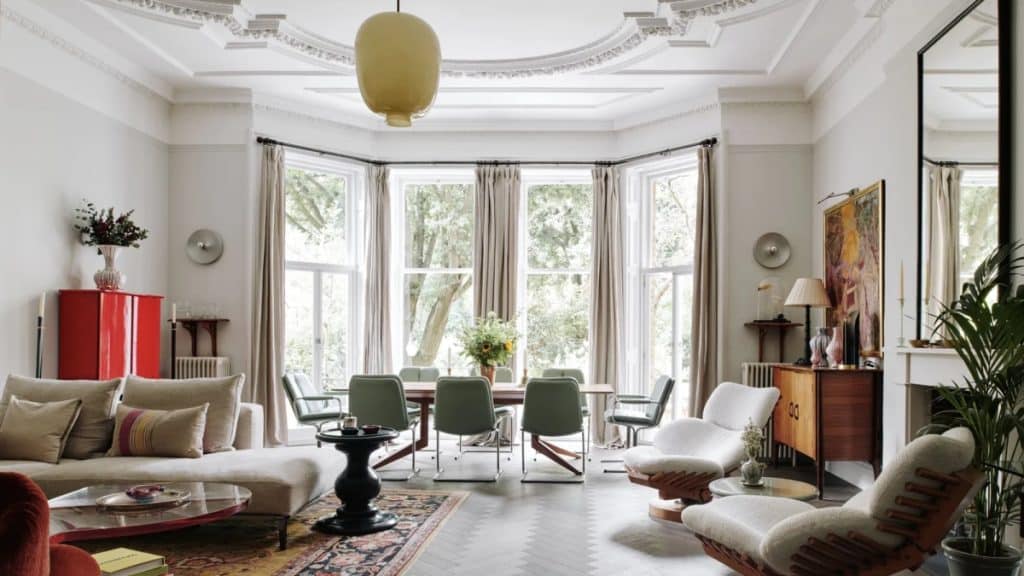Creating a home that is both inviting and functional requires careful thought. From furniture selection to layout optimization, every decision contributes to how the space feels and works. Here’s a step-by-step guide to help you achieve this balance.
1. Define Your Priorities
Start by evaluating your lifestyle and how you plan to use your space. Consider the following factors:
- Room Functionality: What activities will take place in each room? For example, your living room might need to accommodate both relaxation and entertainment, while your bedroom should be a sanctuary for rest.
- Future Needs: If you expect changes, like a growing family or working from home, design your space to adapt over time. Modular furniture or flexible layouts can future-proof your home.
- Personal Style: A practical home doesn’t have to sacrifice style. Identify themes or colors that resonate with you, ensuring each space reflects your personality while serving its purpose.
Taking time to define these priorities helps you make deliberate design choices that align with your goals.
2. Invest in Multi-Functional Furniture
Multi-functional furniture is a game-changer, especially for smaller homes or shared spaces. Look for pieces that optimize utility while enhancing comfort, such as:
- Beds with Built-In Storage: Items like Reinforced Beds combine durability with hidden compartments for extra bedding, clothing, or seasonal items. These are perfect for keeping bedrooms tidy without adding bulky furniture.
- Convertible Furniture: Sofas that transform into beds or coffee tables that double as desks are perfect for maximizing the functionality of shared or small spaces.
- Modular Systems: Modular shelving or seating allows you to adapt the setup as your needs change, giving you flexibility over time.
Investing in versatile furniture not only saves space but also ensures your home feels less cluttered.
3. Focus on Ergonomics and Layout
A practical layout enhances your home’s usability, while ergonomic choices improve comfort. Here’s how to strike the right balance:
- Furniture Placement: Arrange furniture to create natural pathways and distinct zones. In a living room, position seating to encourage conversation while leaving room for movement. In open-plan spaces, use rugs or shelves to delineate areas.
- Ergonomic Furniture: Choose furniture that supports good posture and body alignment. For instance, office chairs with lumbar support or couches with high-density cushions can prevent discomfort over long periods of use.
- Custom Layouts: Tailor the layout to suit your lifestyle. For example, if you love hosting, prioritize open seating arrangements, whereas if you need a quiet workspace, create a secluded nook with minimal distractions.
A thoughtful layout makes every square foot of your home both practical and pleasant.
4. Use Smart Storage Solutions
Efficient storage is essential for maintaining a home that looks good and functions well. Smart storage ideas include:
- Hidden Storage: Ottomans, beds, or benches with concealed compartments keep clutter out of sight while remaining accessible. Reinforced beds are excellent options for sturdy and spacious under-bed storage.
- Vertical Space: Maximize wall space with floating shelves, wall-mounted hooks, or tall bookcases. This is especially useful in smaller homes where floor space is limited.
- Customized Storage: Tailor closets, cabinets, or shelving units to fit your needs. For instance, adjustable shelves in a pantry can accommodate varying item sizes, while drawer organizers in a bedroom keep small items sorted.
Organized spaces save time and reduce stress, ensuring a seamless living experience.
5. Incorporate Durable Materials
Practical homes are built with longevity in mind. Durable materials ensure your space withstands daily wear and tear without constant maintenance:
- High-Traffic Areas: Opt for flooring like vinyl, tile, or hardwood that can handle heavy foot traffic and is easy to clean. Rugs can add softness while protecting these surfaces.
- Furniture Fabrics: Use stain-resistant or washable fabrics for couches and chairs, especially in homes with kids or pets.
- Kitchen and Bathroom Surfaces: Quartz countertops and ceramic tiles are not only stylish but also resistant to stains, heat, and moisture.
Investing in durable materials reduces the need for frequent replacements, saving money in the long run.
6. Balance Lighting for Ambiance and Functionality
Lighting sets the tone for each room and enhances its functionality. Create a balanced lighting scheme by combining different types:
- Ambient Lighting: Ceiling fixtures or recessed lights provide general illumination for larger spaces.
- Task Lighting: Use focused lighting like desk lamps or under-cabinet lights for activities like reading, cooking, or working.
- Accent Lighting: Highlight artwork, architectural features, or plants with directional spotlights to add depth and personality.
Natural light is equally important. Maximize it by using sheer curtains, strategically placing mirrors, or opting for lighter wall colors that reflect sunlight.
7. Add Personal Touches
A home feels complete when it reflects your personality. Injecting unique elements into your design ensures the space is not just functional but also meaningful:
- Decorative Items: Showcase personal collections, family photos, or travel mementos to make your home feel uniquely yours.
- Custom Artwork: Commissioning or creating art pieces adds a distinctive flair while supporting local artisans.
- Scent and Texture: Use candles, diffusers, or fresh flowers to add a sensory dimension to your home. Incorporate a mix of materials like wood, metal, and textiles for visual and tactile interest.
These touches transform your home into a space that feels truly yours while balancing comfort and practicality.
By combining thoughtful planning, smart storage solutions, and high-quality furniture, you can design a home that’s both functional and inviting. Whether you’re starting from scratch or refreshing your current space, these tips ensure every element works together seamlessly.
